Alavus 作者: 来源: 发布时间:2021-06-21
一、所属省或是州,具体位置,人口,面积
Alavus (Swedish: Alavo) is a town and municipality of Finland. It is located in the province of Western Finland and is part of the Southern Ostrobothnia region. The town has a population of 11,545 (31 January 2019) and covers an area of 1,151.46 square kilometres (444.58 sq mi) of which 52.31 km2 (20.20 sq mi) is water. The population density is 14.61 inhabitants per square kilometre (37.8/sq mi). Neighbouring municipalities are Alajärvi, Kuortane, Seinäjoki, Virrat and Ähtäri.
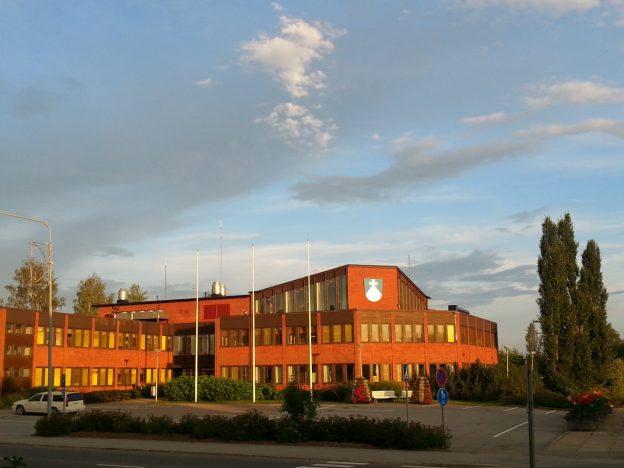
二、自然地理
1.地理条件
The town of Alavus is located near Suomenselä, the watershed of Ostrobothnia and Lake Finland, in southeastern Southern Ostrobothnia. It is divided into two approximately equal parts, the East and the West, which are very different. The western half is flat, slightly sloping to the northwest, characterized by small lakes and bogs. That is exactly why Suomenselä's Finnish is usually described. The eastern part is more reminiscent of the Häme landscape.
The scenic boundary between the western swamp and the eastern hillland roughly follows the watershed between Lapuanjoki and its largest tributary, the Nurmonjoki. The landscapes in the western part of the lowlands are varied. Suomenselä's legal areas are characterized by partially woodless aapa bogs, but there are also streaked cream oats on the lower lands.
The Lapuanjoki river starts from Kukkolammi in Virrat and descends to the clay-covered Rimpijärvi and further to the beautiful rocky and sandy Sapsalampi. From here the river continues as Pahajoki and flows e.g. Through Alavudenjärvi towards Kuortaneenjärvi. The Nurmonjoki, which collects the waters of the western part of Alavus, starts as the Vehkajoki from Vehkajärvi, right at the top of Suomenselä. After flowing through the pool lakes, the river continues as a pool river until it turns into a slightly wider Åland River when the Myllyjoki River joins it. The Ahvenjoki river initially flows through Jääskänjärvi and continues to the Seinäjoki border, where it widens at the Lehmijoki branch to Nurmonjoki. Nurmojoki still receives the waters of Lake Kuorasjärvi from the Alavus side via Kuorasluoma. The Nurmonjoki flows into the main river of the Lapuanjoki River in the city center of Lapua. Lake Kuorasjärvi, two kilometers wide and ten kilometers long, is the largest lake in Alavus. Together with Lake Jääskänjärvi, its shores differ from the salt marshes typical of Suomenselä. The rocky and sandy moraine shores of the lakes are so steep that the water area cannot be widely grassed. These beaches have become one of the most important recreational areas in the nearby city of Seinäjoki.
The forests between lakes and bogs are usually lingonberry-type fabrics, on the surface of which the lichen often reveals the proximity of the bedrock. There are quite a lot of open rocks smoothed by the ice age. With a few moraine ridges rising slightly higher than their surroundings, the soil is more fertile. They are transformed into more hexagonal blueberry-type fabrics.
Waters
2. 交通情况
The traffic location of Alavus had further improved when the Haapamäki – Seinäjoki railway opened in 1883. However, the line was lined about 3 kilometers north of the church village. The center was divided into two, the station area and the church area. As the importance of the road connection decreased, the focus of development shifted, at least in part, to the station area. This dichotomy has apparently to some extent weakened the growth of more urban settlements. Another factor holding back growth was the lack of a densely populated commercial sphere of influence. Like Suomenselä, the neighboring municipalities are small and the distances between the municipalities are long. Alavus' traffic location weakened in 1971, when the Ostrobothnian line was straightened past Alavus from Tampere directly to Seinäjoki. Alavus was a trader from 1974 to 1976 and received city rights on 1 January 1977.
Alavus is located at the intersection of Highway 18 and Highway 66. The Haapamäki – Seinäjoki line also runs through Alavus, with some passenger and freight traffic. However, the track bypasses the center of Alavus, and Alavus railway station is located about four kilometers north of the center. The second train station is located in Tuuri.
三、经济发展和规模
The unemployment rate in Alavus is 8.1% and the employment rate is 71.0%. Primary production accounts for 18.5% of the business community, processing for 28.5% and services for 49.2%. There are almost 600 companies in the municipality. The companies that paid the most corporate tax in 2016 were Veljekset Keskinen Oy, Alavuden Seudun Osuuspankki and Nahkapaikka Oy Toivonen.
四、产业特点重点项目
Agriculture and forestry employ a significant share of the population. Most of the industry in Alavus is related to construction: materials, design and contractors. Alavus has 60 lakes with 324 kilometres (201 mi) of shoreline. The town is unilingually Finnish.
五、风景名胜,景点( attractions)
1. Taidekeskus Harri
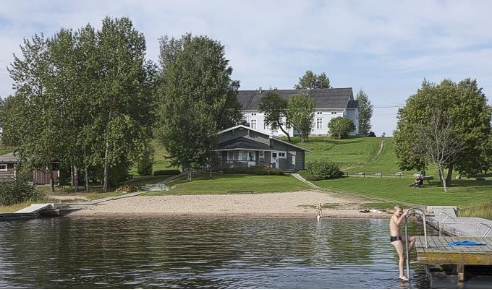
Harri Art Center is located along Highway 66 near the city center, in a scenically beautiful location by Lake Alavudenjärvi. Our changing exhibitions offer a diverse set of interesting, diverse artists. The current building is owned by the city of Alavus. Harri Art Center was opened on September 22, 1990. In addition to the exhibitions that change every summer, the Art Center Harri has permanent exhibitions of the Arabia milk jug collection, the Toivo Kuula room and the Veterans' Traditional Room.
2. Alavuden kirkko ja kellotapuli
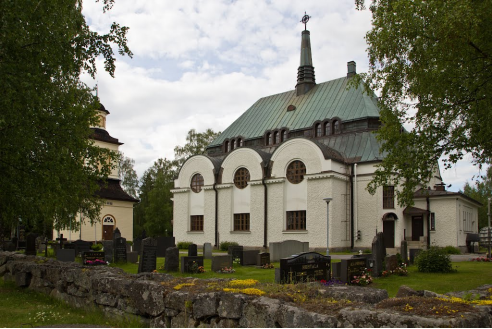
Alavus Church is the fourth church in the locality and was completed in 1914. The plastered brick church was designed by Kauno S. Kallio. In the form of Alavus, the church is a long church, which is covered by a high roof. The altarpiece painted by Oskari Paatela shows the taking of Jesus on the cross. The Church's current organ was acquired in 1970 and renovated in 2006-2007. The most significant reform of the church was made in 1992, when the back of the church was transformed into a foyer. At the same time, a childcare room, a bridal couple's room and a separate room for sound and television broadcasting were built.
3. Muistojen Kappeli
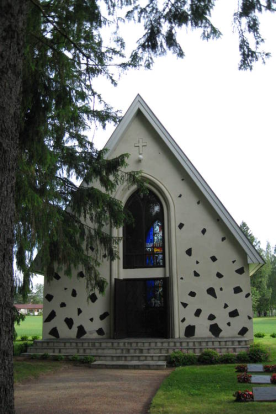
The Muistojen Kappeli is built in memory of all the heroes of Alavu. It is located in the heroes' cemetery of Alavus, where the first and second churches of Alavus used to be. The chapel is a small, steep-roofed building with a floor area exactly the same size as Alavus ’first pulpit, which was previously on site. On the side walls of the chapel are memorial plaques of the War of Independence, the Winter War, and the Continuation War, on which are written the names of all the Alutus who died in these wars. On the right wall of the altar, in turn, are the names of the pastors who served in the parish.
The back wall of the chapel has a large stained glass painting over 4 meters high, designed by the artist Bruno Tuukkanen and made by S. Wuorio's stained glass workshop in 1955. The upper part of the stained glass depicts a hero's funeral, with a belfry and glorious flags in the background. The second zone has a war widow, war orphans and an angel of peace. The lower zone depicts a set of ecclesiastical symbols: the Gothic head of the church, the saint and the lamb. This zone symbolizes the comfort offered by the church and religion in difficult times.
4. Sotavanhuksen Museo
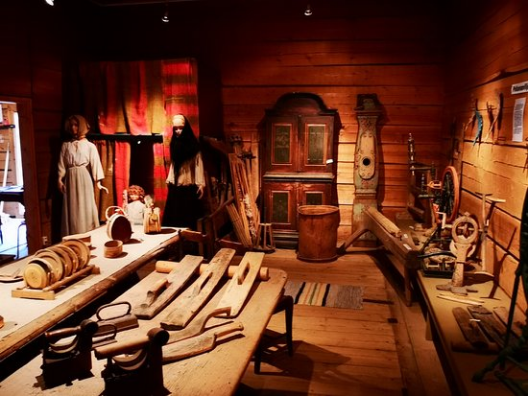
The Sotavanhuksen Museo Museum is a local history museum maintained by the Alavus Society, located in an old granary next to Alavus Church. The museum is named after J.L. Stories of Lieutenant Stool written by Runeberg from the Sotavanhus poem. The two floors of the museum present e.g. Stages of the battle of Alavus, Stone Age discoveries, church history, peasant objects and various means of transport.
六、历史文化
1.历史
The man arrived in the Alavus region as soon as he retreated to the mainland. The oldest Stone Age finds in the region date back to the time of Lake Suomusjärvi culture, about 8000–5000 BC. Stone guns, campfire bottoms, mound remnants, and burnt bones tell a lot about the life of the Stone Age population. As the coastline moved west, population in the Alavus area also decreased considerably, and no signs of it were found at the end of the Stone Age. Iron Age artefacts show a favorable location for business and good fishing grounds have constantly attracted people to the site, even though the direct waterway had already been cut off due to land uplift.
The settlement remained a mobile fishing culture until the 16th century. The people of Häme used the region as a route to their wilderness and the Gulf of Bothnia. At the end of the 16th century, the Savonian birch-burning population began to settle in the region. The upper part of the Lapuanjoki valley was called Lapua Savo in the 17th century. Savonian culture was a kind of intermediate between permanent agriculture and mobile fishing culture. Most of the population in the region moved elsewhere. The final settlement took place from the west, mainly to the middle reaches of the Kyröjoki and Lapuanjoki rivers, where the population of Satakunta originated.
The establishment of a city in Uusikaarlepyy at the mouth of the Lapuanjoki River was an important event in the history of Alavus. In 1617, Ruovesi, located at the northern end of Lake Näsijärvi, was assigned to the Uusikaarlepyy trade district.
During the Finnish War, an important battle was fought in Alavus, now known as the Battle of Alavus. During the retreat phase on July 14, 1808, the Finnish field army had won in Lapua, but the Russians threatened to nullify it by conquering an important crossroads in Alavus. Carl Johan Adlercreutz then decided to recapture Alavus and on August 17 attacked a Russian force of almost half the size of about 4,000 men. The Finns grouped in an attack on the stages of the Church of Alavus and proceeded to attack the western shore of Lake Alavuden to the south. On the lands of the Röyskö farm, Adlercreutz himself led the attack on the left side of the Russians. His sub-commanders included Karl Leonhard Lode and Johan Reinhold von Törne, known from the stories of Lieutenant Stool. After Härkönen, located near the current Harri Summer Theater, had been captured by an assault, the Russians were driven from behind a mile and a half along the ridge of Kuortaneen-Ruovesi. However, the Finnish army could not take advantage of Alav's profit. The time of autonomy was in Alavus through rapid development. New fields were cleared and the population multiplied. At the beginning of the 20th century, the limit of ten thousand inhabitants was already exceeded.
2. 文化体育
The Alavus region initially belonged to the Ilmajoki parish. In 1674, the Ilmajoki preaching room was formed from Alavus. Alavus became a chapel congregation in 1701 and received its own priest. Alavus was annexed in 1798 to the newly established parish of Kuortane as a chapel parish. The people of Alavu were dissatisfied with the fact that the pastor lived in Kuortane, so in 1835 Alavus became the parish church, to which Kuortane was merged, and in 1837 the pastor of Kuortane moved to Alavus. The whole parish was still named Kuortane at that time. Kuortane and Alavus were each separated into their own parent church in 1859 and Alavus regained its old name. In practice, however, the separation of the parishes did not take place until 1875. Töysä resigned as his own parish in 1896.
The first church was built in Alavus probably in 1677, the second perhaps in the 1740s. Built between 1823 and 1825, the church, designed by Carl Ludvig Engel, was destroyed in a fire in 1912. Only the belfry designed by Carl Bass survived. The city's current plastered brick church, designed by Kauno Kallio, was completed in 1914.
七、其他信息
The transports took place over Suomenselä along the shore of the ancient Näsijärvi river. At the beginning of this phase, the Alavus region was still so sparsely populated that, according to tax lists, there were only six houses. Traffic was initially conveyed only by the equestrian trail that led from Häme to Ostrobothnia, so trade remained quite modest. Indeed, the development of Alavus was slow throughout the 17th century. However, the situation changed at the end of the 17th century, when a road was built from Ruovesi to Uusikaarlepyy. The number of houses had risen to only twenty in a hundred years. By the end of the 18th century, there were already more than a hundred houses and the population rose to close to two thousand.
八、联系方式
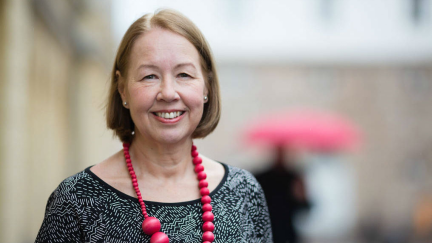
Mayor of Alavus: Liisa Heinämäki
Website: www.alavus.com
Phone number: (06) 2525 1000
Address: Kuulantie 6, 63300 Alavus
Email: info@alavus.fi/ etunimi.sukunimi@alavus.fi
Facebook: @alavus
